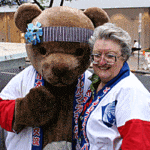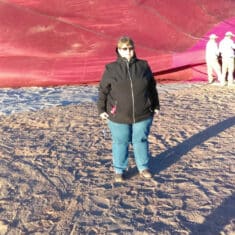Bering Land Bridge, Alaska
Land bridges are not unique; Australia was once linked to both Tasmania and Papua New Guinea, the British Isles were linked to the European Continent and Sumatra, and Java and Borneo were once linked to the Asian Continent. What differs with Bering Land Bridge is that it served as a migration route from the Asian Continent into North America, of not only people, but mammals like cats, which evolved into our Saber Tooth Tiger (now extinct), and Tyrannosaurus Rex, also, thank you, extinct.
During the Pleistocene Ice Age (22,000 to 15, 000 years ago) , the land mass between Asia and North America was most likely connected by a “bridge” around 1,000 miles wide As the Ice Ages grew and receded, this land mass was exposed to allow for what is believed to be the first human migration to North America. When an Ice Age descends on the world, the waters of the seas, become sheets of ice several miles thick covering the continents. As this water is no longer in the seas, masses of land become exposed, forming the “bridge”. As the ice recedes, the water again melts into the seas and the ocean level rises, covering the “bridge”.
The preserve today contains no permanent ice sheets, it is a very dry area. The temperature soars to a rousing 50 degrees in the summer, and in the winter ranges from minus 15 to minus 50. There are no roads here (now where have I said that before?) but also no permanent buildings, or other infrastructure. The preserve is on an island named Little Diomide. Big Diomide Island is located 55 miles away, across the Chukchi Sea, in Russia. The landscape shows it’s volcanic origins with sand dunes, lava flows, ash deposits and steam explosion craters called maars. The largest maar is called Devils Lake. The landscape does remind one of what a depiction of hell would be.
The only way to get here is bush plane, and you land on the beach. The plane flies first down the beach checking for any obstacles moved during the winter by the ice bergs which still occupy the Chukchi Sea. If it’s clear, the landing happens between the sea, filled with bergs, and the short sand dunes. As we landed the sand hill cranes raced over the dunes. I had always thought these birds were rather fragile creatures due to their endangered status. But, I had to re-think that due to their existence here, so far to the north and in such an inhospitable land. It is kind of awesome to stand on this beach and realize that the Russian border (in water) was only about three miles away, that we were much closer to Russia than to Anchorage, and that our ancestors probably came across at this point around 15,000 years ago. We also see Caribou. I am told there are wolves, grizzly, and in winter, polar bears.
There is a movement afoot to make this park, along with several other Arctic National Parklands, into an international park called Beringia – the original name for this land. Beringia’ s purpose is to bring together the peoples on both sides of the sea which share common ancestry, heritage, problems in existing in a harsh environment. A sort of shared heritage park – the NPS is currently working with the three Native Regional Corporations of Alaska to develop this idea of Presidents Bush and Gorbachev. Also under consideration is the study of the shared land of the polar bear habitat and seabirds migration and hatchery areas, and ways to preserve the area for that important function.
As usual, the method for arriving here is a chartered aircraft from Kotzebue. The landing strip as mentioned above is the beach. And the exploration would be contained to a day trip.



